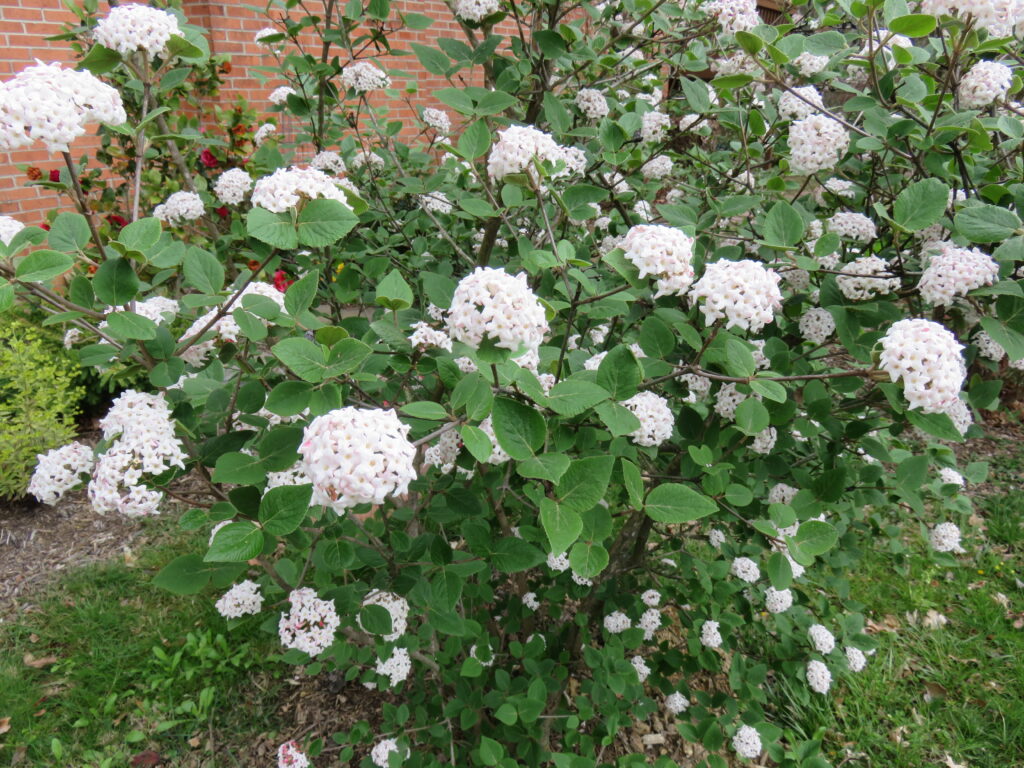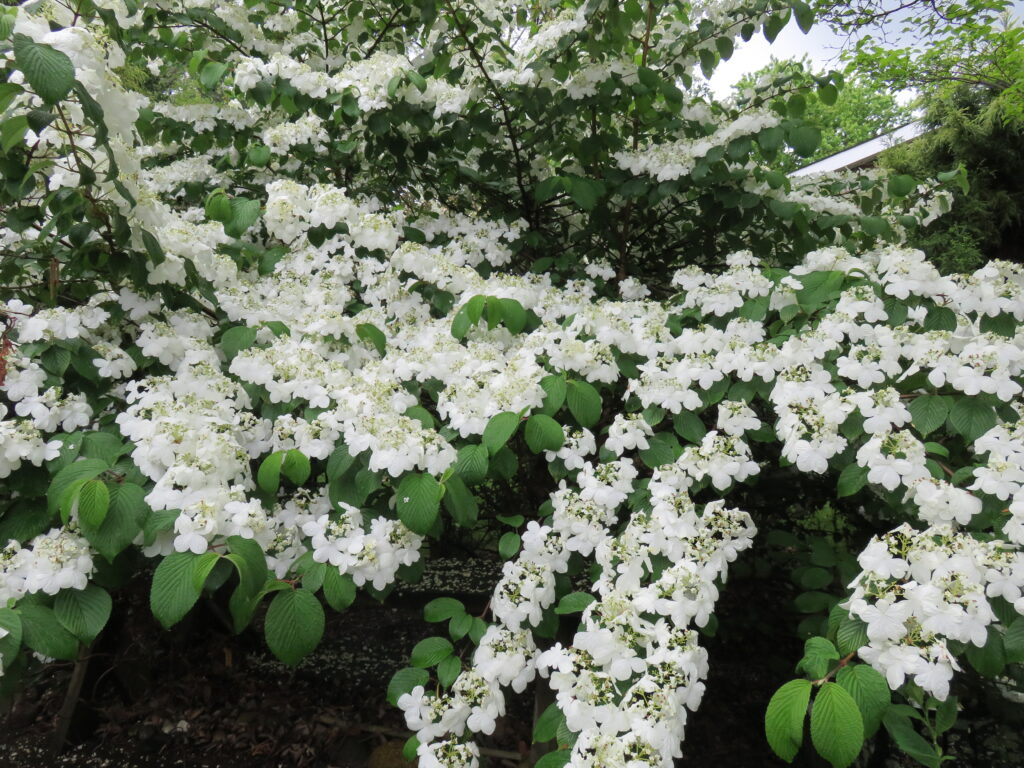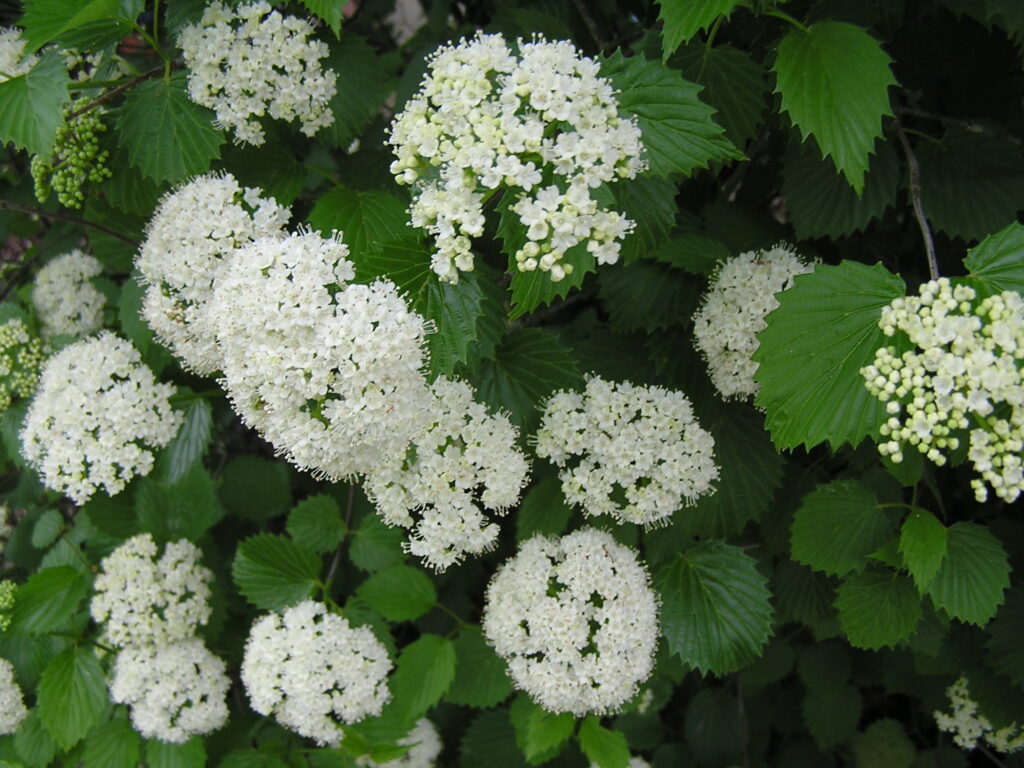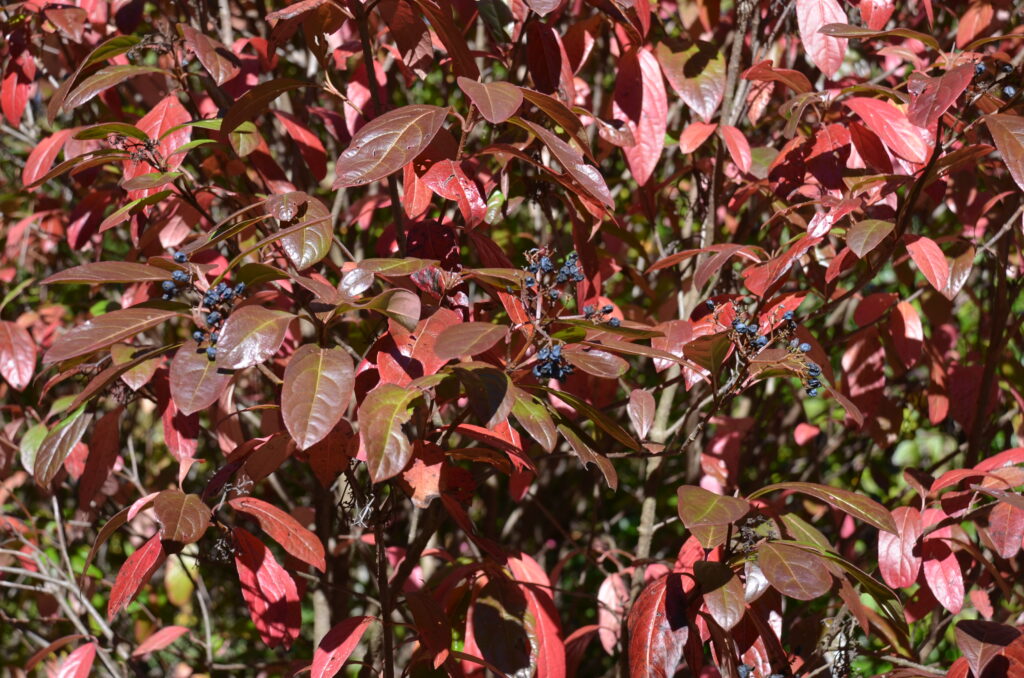Viburnums are versatile landscape shrubs that flower, fruit, and fall color. Several species have fruit that attracts birds and may persist most of the winter. To have the best cross-pollination and fruit display plant in groups rather than as specimens. Viburnums tend to prefer slightly acid soil. They have few pest or disease problems and need little pruning if they are selected and properly sited.

Korean Spice (V. carlesii) small white flowers, opening from pink buds, are highly fragrant from several feet away. sweet, rich, and complex with a hint of cloves. It has an attractive wine-red fall foliage on a compact, spreading 4- to 5-foot-high shrub. (Zones 4-7).
Mohawk hybrid viburnum (V. x burkwoodii ‘Mohawk’) has showy fragrant flowers and will attract wildlife to your yard. (Zones 4-8). Mature plants have excellent heat and drought tolerance; foliage turns maroon in fall but remains evergreen in zones 7 and 8.
Cayuga viburnum (V. x carlecephalum ‘Cayuga’) has a 4-10 feet tall and wide compact growing habit along with 4-inch snowball-shaped fragrant blooms in spring. (Zones 4-8).

Doublefile viburnum (V. plicatum f. tomentosum), with stately horizontal branches on a 10-foot-tall shrub. ‘Shasta’ and ‘Mariesii’ are beloved for its layers of broad, flat, white flower clusters, though it bears little fruit. Its crinkled deep green leaves take on a burgundy tint in autumn. (Zones 5-8).
Judd viburnum (V. x juddii) grows only 6 – 8 feet tall and 6 -10 feet wide, with an upright rounded form. pink buds open to snowball clusters of fragrant white blooms in the spring, reds and purple fall color. In some years its dark green leathery foliage turns red in autumn. (Zones 4-8).
Chinese Snowball viburnum (V. macrocephalum) grows up to 25 feet tall and 20 feet wide with a rounded vase-shaped form. Flowers are the largest of the snowball viburnums with profuse dome-shaped, rounded, infertile flowers in spring and some secondary bloom in the fall. The flowers emerge chartreuse and quickly turn white, sterile, and no fragrance. (Zones 6-9).
American cranberrybush viburnum (V. trilobum). Shiny red fruits (not true cranberries) follow the white flowers if they are pollinated from another plant, and broad leaves, almost maple-shaped, has distinctive trilobed leaves that turn bright red in autumn. Redwing (‘J. N. Select’) grows up to 10 feet tall and 8 feet wide. (Zones 2-7).

Arrowwood viburnum (V. dentatum) grows in full sun to part shade and range from 5-10 feet in height depending on cultivar. The broad white flower clusters that come in June are fragrance-challenged, but they mature into blue-black berries that birds love. ‘Blue Muffin® and Autumn Jazz® (‘Ralph Senior’) have reliable fall color. Chicago Lustre™ (‘Synnestvedt’) produce shiny blue berries in autumn. (Zones 2-8).
Blackhaw viburnum (V. prunifolium) is a 15-20-foot-tall tough utility shrub or small tree. It produces creamy flower clusters in May and pink fruits that eventually ripen to black; fruits are edible for humans as well as birds. (Zones 5-9)
Possumhaw, Witherod viburnum (V. nudum) is represented by two outstanding 5-6 feet tall cultivars– Brandywine™ (self-fruitful) and ‘Winterthur’ bear 2-5-inch-wide flat-topped flower clusters in May-June attractive glossy dark green leaves thru summer, and a stunning display of rosy pink and dark blue fruits in fall. Both varieties follow up with plentiful clusters of tart berries that start out light pink to deep pink and ripen to blue to purplish-black fruits; plant two or more for best fruit numbers. (Zones 5-9).


 Posted in
Posted in 
